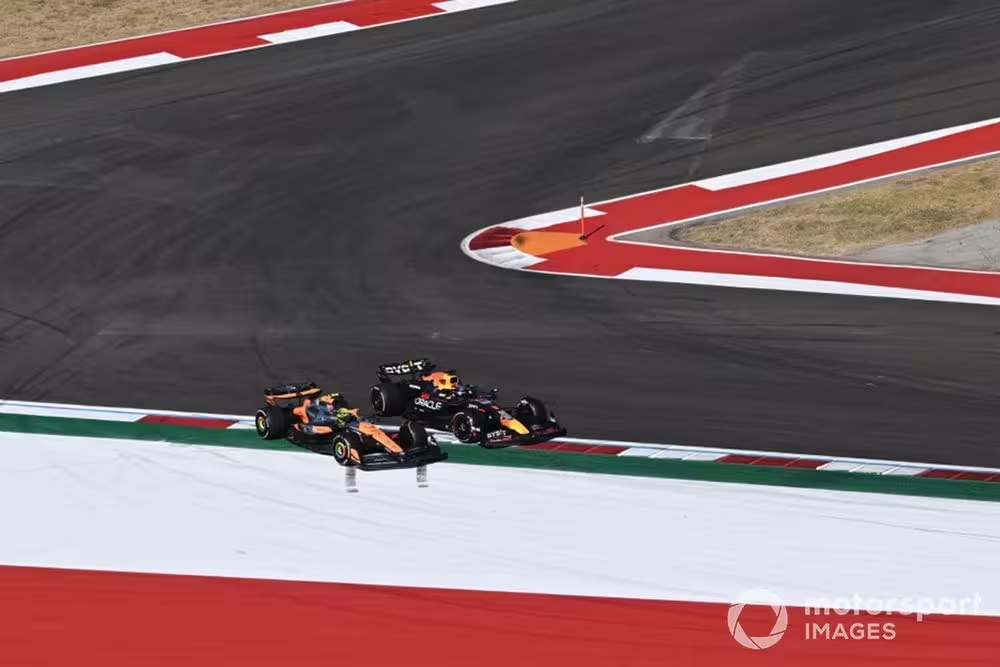The controversy over the Lando Norris/Max Verstappen overtake in Austin has once again put a spotlight on the way Formula 1 is policed.
Fans are divided about whether it was right that Norris got a penalty for overtaking off track in an incident when his rival had run off the circuit in his efforts to defend against him.
It delivered flashbacks to the battle between Verstappen and Lewis Hamilton at the 2021 Brazilian Grand Prix where defending by running wide became a major bone of contention.
What is different now compared to back then is that F1 is operating under a new system where there are common and agreed Driving Standards Guidelines.
As reported by Autosport, this formal document has been pulled together outlining the basis on which stewards will make their decisions, and this is set to be rolled into the FIA’s 2025 International Sporting Code, so will be applied to all categories in the future.
But while the guidelines were aimed at making things clearer in drivers’ heads about what is and is not allowed, what happened at Turn 12 in Austin has perhaps only served to add some confusion, as well as expose some big flaws with the premise about how things are judged.
The debate over Verstappen running wide
Lando Norris, McLaren MCL38, battles with Max Verstappen, Red Bull Racing RB20
Photo by: Sam Bagnall / Motorsport Images
What is mentioned in the guidelines themselves is that no two incidents are the same, and this is in essence one of the key problems when it comes to creating hard and fast rules – because what fits one move may not be right for another.
But one recurring theme from the Norris penalty decision is the fact that Verstappen went off track himself – and that makes the situation less crystal clear than if he had remained within the white line.
While Norris clearly did not fulfil the guideline’s criteria to be ALONGSIDE his rival at the apex, equally there is a question over Verstappen’s defence.
As the guidelines clearly state: “If, while defending a position, a car leaves the track (or cuts a chicane) and re-joins in the same position, it will generally be considered by the stewards as having gained a lasting advantage and therefore, generally, the position should be given back, as prescribed in the rules. It will be the sole discretion of the Stewards to determine if the driver of a car is “defending a position.”
So, are we in a world where if Norris had stayed on the track and…
Click Here to Read the Full Original Article at Autosport.com – Formula 1 – Stories…

